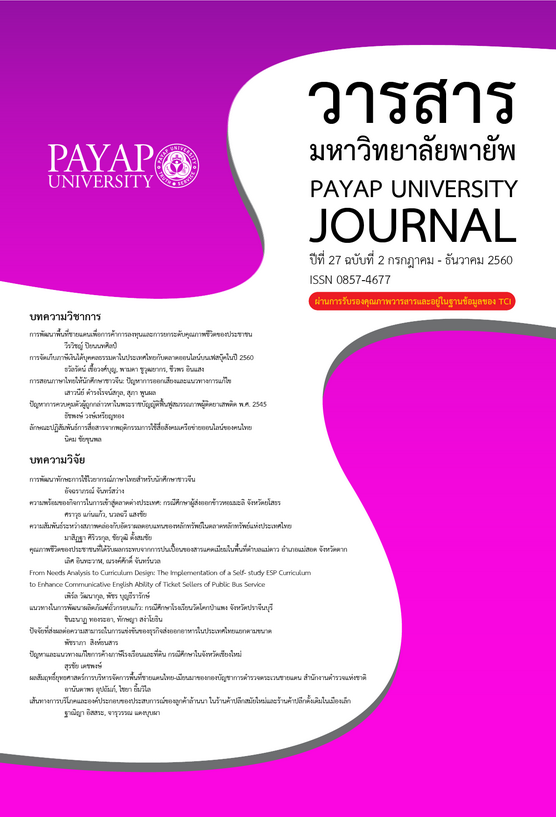ลักษณะปฏิสัมพันธ์การสื่อสารจากพฤติกรรมการใช้สื่อสังคมเครือข่ายออนไลน์ของคนไทย
Main Article Content
Abstract
There are 3 models of communication interaction; reactive, proactive and mutual interaction. Each of them owns characteristic differently and allows users to participate and interact with the media variously which suit for each individual users’ personal factors; gender, age, level of education and personal background. All model of the communication interaction has been applied in designing of the social networking media.
The communication interaction embed within the social networking media are the major gimmick which become an important factor that bring the users involved in reacting and participating with the media itself and also with other members of
the certain social networking. Moreover, while using the social networking media, the users can feel being close when chatting, exchange and share with friends. Furthermore, they also take roles of controlling the media.
In addition, these interactive functions provide the user searching information with the reactive interaction, to exchange among members with the proactive interaction and to be a part of media creating with the mutual interaction. Thus,
it could be said that the users with different personal backgrounds have own appreciated points on the social networking world. As a result, the communication interaction has a big role in pushing the social networking to become the most popular media among diversity people in this contemporary world. Therefore, it could be suggested for media producers to consider to apply the different communication interactions into the media. This could persuade the user to use the interactive media to share, exchange and create ideas to enlighten and improve their society.
Article Details
References
สำนักงานพัฒนาธุรกรรมทางอิเล็กทรอนิกส์ (องค์กำรมหาชน). 2559. รายงานผลสำรวจผู้ใช้อินเทอร์เน็ตประเทศไทย 2559. กรุงเทพฯ: สำนักงานพัฒนาธุรกรรมทางอิเล็กทรอนิกส์
Gráinne Conole and Karen Fill. 2005. A learning design toolkit to create pedagogically effective learning activities. Journal of Interactive Media in Education (Advances in Learning Design). Special Issue, eds. Colin Tattersall, Rob Koper), 2005/08 ISSN:1365-893X. Retrieved December 23, 2016, from https://jime.open.ac.uk/ 2005/08
Lev Manovich. 2001. The Language of New Media. MIT Press, MA, USA
McLuhan, Marshall. 1964. Understanding Media: The Extensions of Man. Cambridge, MA: MIT Press.
Rod Sims. 1997. Interactivity: A Forgotten Art? In Computers in Human Behavior, 13(2), May 1997, 157-180
Schwier, R.A. & Misanchuk, E. 1993. Interactive Multimedia Instruction. Englewood Cliffs, NJ.: Educational Technology Publications.
Vorderer Peter, Knobloch Silvia and Schramm Holger. 2001. Interactivity? The Impact of Watching an Interactive TV Movie on Viewers’ Experience of Entertainment. Media Psychology. NJ.: Lawrence Erlbaum Associates, Inc.
William J. Schroer. 2015. “Generations X, Y, Z and the others”. Retrieved January 10, 2017 from https://socialmarketing.org/archives/generations-xy-z-and-the-others

